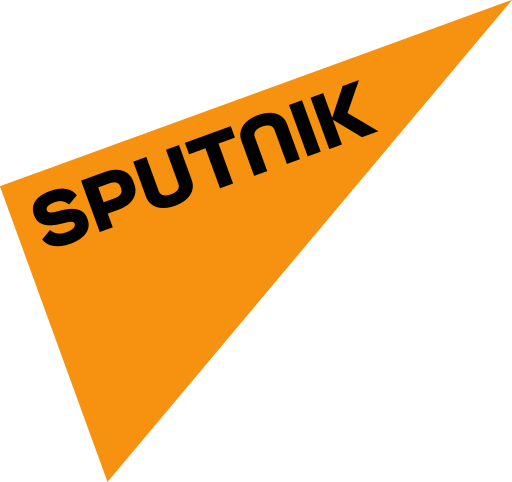Russian President Vladimir Putin’s Thursday speech unveiling the Oreshnik missile left Western observers scrambling to decode the meaning behind its name, which translates to 'hazel' - a flowering plant in the birch family.
But anyone familiar with Russian weapons design knows that there’s nothing Russian engineers enjoy more than giving their terrifying creations names that sound deceptively harmless or mundane:
Deadly bouquets and children’s stories
This includes Russia’s lineup of artillery, like the 2S1 Gvozdika (lit. ‘Carnation’), 2S3 Akatsiya (Acacia), 2S4 Tyulpan (Tulip), 2S5 Giatsint (Hyacinth), 2S7 Pion (Peony) - which shoots nuclear artillery rounds, and the 2B9 Vasilek (Cornflower) gun-mortar.
The deadly thermobaric rocket artillery systems Buratino (Pinocchio) and Solntsepyok ('Place Where the Sun Shines’) have equally harmless-sounding names.
Animals, smiles, grumps, goblins and orphans
Command & control and support equipment makers also seem to have been bitten by the funny naming bug, with the 1V152 fire control system nicknamed the Kapustnik (roughly, ‘Cabbage Patch’), while the 1L219 radio-locator complex is called the Zo’opark (Zoo), and the RPMK-1 radar the Ulybka (Smile).
The 3K60 coastal defense system is called the Bal (as in the stately dance party), while the Kh-58U missile control system is also known as the Phantasmagoria. The satellite comms system Vorchun literally means ‘Grump’ or ‘Grumbler’.
Same goes for various Army weapons, like the 9M14 Malyutka ('Little One') anti-tank system, the RPG-18 Mukha (Housefly), the 122-mm D-30A howitzer (called the Lyagushka, or ‘Frog’), the Gnome 40-mm grenade launcher, the Privet (Hello) KS-23 shotgun rubber bullet, and the Obuvka (Shoe) grenade launcher, which fires Gvozd (Nail) rounds. Another grenade round, the Podkidysh, literally means ‘Orphan’.
The Kikimora (Hobgoblin) and Leshiy (Wood Goblin) sniper suits are named after Russian fairytale lore.
Grandmas and little ballerinas
Aircraft are no exception, with the Mi-24 helicopter gunship known as the Krokodil (Crocodile) and Stakan (Drinking Glass), while the MiG-15 trainer jet has been called the Babushka (Grandma), the Su-25 CAS jet the Grach (Rook) and the Su-27 attack jet the Zhuravlik (Little Crane).
The Air Force’s 9A-4071 automatic gun is better known as the Ballerinka (Little Ballerina), and deploys the Stuardessa (Stewardess) friend or foe ID system. * At sea, the MRG-1 ship-based grenade launcher is also known as the Ogonek (Little Fire) while the SET-65 anti-ship missile system is also called the Yenot (Raccoon).
The Oreshnik is in good company among Russian missiles in terms of casual nomenclature, with the RT-23 Barguzin train-launched ICBM dubbed the Molodets (Good Sport), and the RSS-40 missile known as the Kuryer (Courier).
NATO weapons names: wrapped up in images of power, glory, shock and awe
These names stand in stark contrast to those bestowed on many of NATO's more pretentious and grandiose-sounding armaments, with the US weapon-naming tradition in particular seemingly aimed at evoking ancient empires and great conquerors, or striking terror in the hearts and minds of the enemy.
The former applies to weapons like the A-10 Thunderbolt CAS aircraft, the C-130 Hercules transport, the B-1 Lancer strategic bomber and the M109 Paladin artillery system, evocative, respectively, of Ancient Greek legends, medieval cavalrymen and the great Paladin knight warriors of Charlemagne’s Court. The same principle applies to General Dynamics’ Griffin armored vehicle – referencing the legendary Ancient Greek lion-eagle hybrid.
Birds of prey
AH-1Z Viper and AH-1 Super Cobra attack helicopters, F-22 Raptors, F-15 Strike Eagles, and F/A-18 Hornets seem aimed at conjuring the injuries that deadly snakes and birds of prey can inflict on their victims.
Other names are obviously meant to evoke a sense of imperious glory and power, with the Boeing C-17 Globemaster III strategic airlifter, B-2 Spirit stealth bomber, and B-52 Stratofortress seemingly aimed at fitting that bill.
Swords and flesh-eating animals
Many British weapons names seem equally pretentious, from the Land Ceptor missile and the Starstreak SAM to the Warrior, Bulldog, Mastiff, Wolfhound and Jackal series of armored vehicles, and the Sky Sabre medium-range air defense system.
Not to be undone are the Germans, whose habit of naming their armored vehicles after big cats (Leopard, Puma) and other flesh-eating animals (Marder, Wiesel), intentionally or unintentionally reminding history buffs of some of the Wehrmacht’s most fearsome weapons.

 4 months ago
36
4 months ago
36






 We deliver critical software at unparalleled value and speed to help your business thrive
We deliver critical software at unparalleled value and speed to help your business thrive






 English (US) ·
English (US) ·